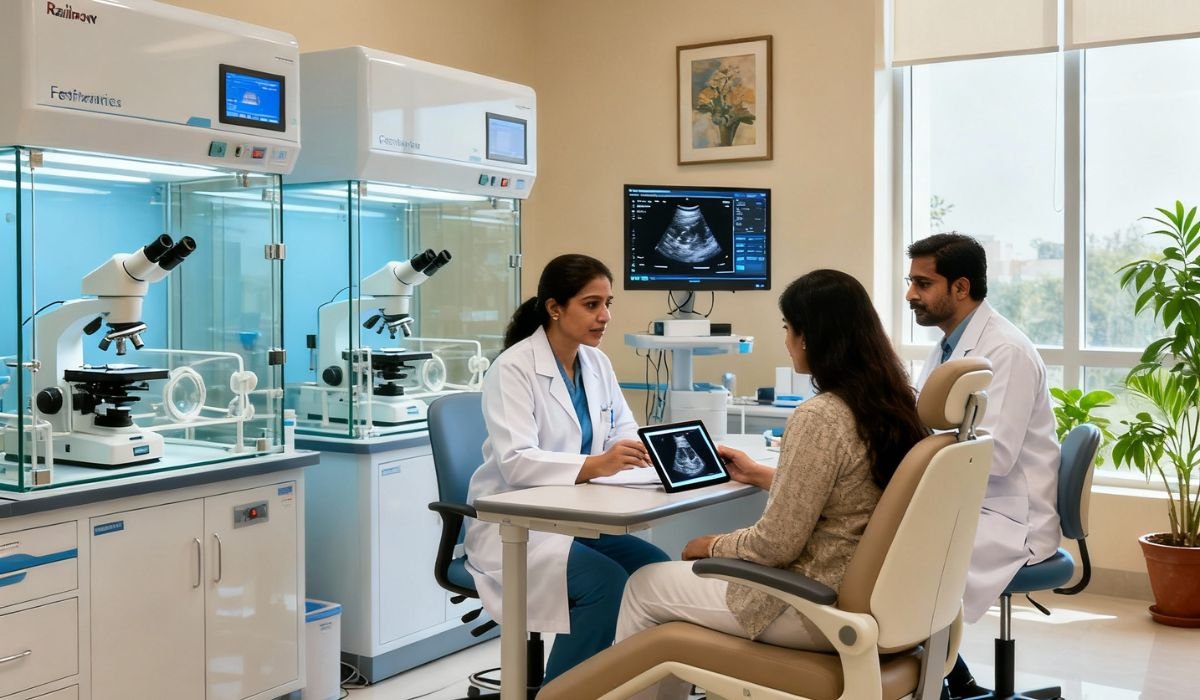


IVF success rate in India has improved a lot , thanks to advanced technology, better embryo screening, and specialized fertility doctors. But success completely depends on the age of the couple, medical condition, lifestyle, and timing of the treatment — not just the clinic.
This article will simply explain how IVF success really works in India, common myths people still believe, age-wise success chart, and doctor-approved real guidance before you start the treatment.
No two IVF cases are the same. Even if two couples go to the same hospital, same doctor, their results can be completely different based on:
Fun fact (but true): It’s not always “best hospital = best success rate”. Best diagnosis + correct timing = highest IVF success.
Success rates decrease naturally with age. Women under 30 have the highest chance of pregnancy, while above 40, chances reduce significantly. Most Indian couples, unfortunately, start IVF late, which affects outcomes.
“One IVF cycle means guaranteed pregnancy” — NOT true. Multiple cycles are often needed.
“IVF babies are weak or abnormal” — Completely false. IVF babies are as healthy as naturally conceived babies.
“Only the woman is responsible for infertility” — Male factor contributes to 50% of cases.
“Expensive IVF = Higher success rate” — Technology + diagnosis matters more than cost.
“IVF always means twins” — Doctors now transfer only 1 embryo to avoid complications.
Correct diagnosis, right cycle timing, healthy uterus lining, lifestyle improvements, avoiding stress, and strictly following doctor’s instructions all significantly improve IVF outcomes.
Do This:
Avoid:
Most couples require more than one IVF cycle. First cycle may succeed, but cumulative success after 2–3 cycles increases significantly.
Q1. What is the ideal age to start IVF treatment in India?
Preferably below 35 for women. Egg quality declines sharply after this age.
Q2. Do IVF success rates differ between cities like Delhi, Mumbai, Agra, etc.?
No. Doctor experience and personalized care matter more than city or hospital size.
Q3. Can IVF be fully successful in first attempt?
Yes, especially when age is under 32 and diagnosis is correct.
Q4. Does IVF guarantee twin babies?
No. Most doctors transfer only one embryo to avoid complications.
In recent years, many couples from metro cities are travelling to smaller cities for IVF treatment. The biggest reason is personal attention and time. In crowded metro hospitals, doctors often have limited time per patient, but in smaller IVF centres, every case is studied deeply with customized treatment instead of rushing the process.
The cost difference is also significant, making IVF more affordable without compromising technology. Less waiting time, faster appointments, and lower stress levels naturally contribute to higher success chances. Most importantly, couples feel more emotionally supported, which plays a major role in IVF outcome. This is why many people today prefer travelling to peaceful Tier-2 cities rather than going to overloaded metro hospitals.
IVF in India has come a long way, and success rates are better than ever. While age, diagnosis, and lifestyle play a major role, the key is personalized care, proper guidance, and patience.
Couples across the country are seeing real hope, especially when they choose the right doctor and focus on every detail of the process. Remember, IVF is a journey, not a race, and with the right approach, dreams of parenthood can become reality.





Ph: +91-562-260-0537, +91-7060301888
Address: Rainbow IVF 4th Floor, Ujala Cygnus Rainbow Hospital, NH-19, Near Guru ka Taal, Gurudwara, Sikandra, Agra, Uttar Pradesh 282007